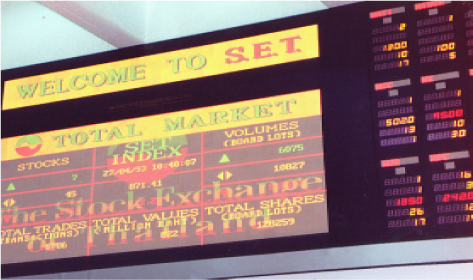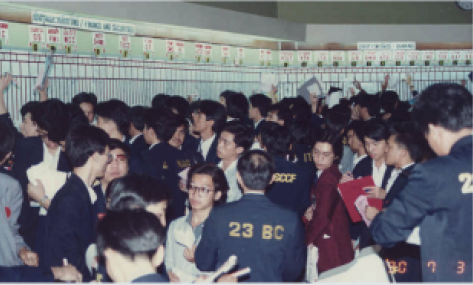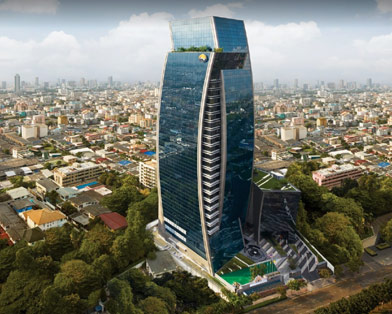The modern Thai capital market traces its origins back to an implementation of the first National Economic and Social Development Plan (1961-1966) to promote economic growth and stability, and to develop people’s standard of living. Subsequently, the Second National Economic and Social Development Plan (1967–1971) proposed the establishment of Thailand’s first regulated stock exchange.
"to play the vital role of mobilizing capital to support the nation’s economic and industrial development."
The modern era of the Thai capital market can be divided into two phases, beginning with the Bangkok Stock Exchange, which was privately owned, and followed by the Securities Exchange of Thailand.
Establishment of The Bangkok Stock Exchange

The first Thai stock exchange was established in July 1962 in the form of a limited partnership. In 1963, the stock exchange was registered as a limited company and its name changed to the Bangkok Stock Exchange Co., Ltd. (BSE).
Although the Bangkok Stock Exchange provided a good venue for trading shares, it garnered limited attention. Annual turnover was only THB 160 million in 1968 and THB 114 million in 1969. Trading volumes continued to drop sharply to THB 46 million in 1970, and then fell further to THB 28 million in 1971. While the turnover in debentures reached THB 87 million in 1972, stocks continued to perform poorly, with turnover hitting an all-time low of only THB 26 million. BSE finally ceased operations in the early 1970s.
It is generally accepted that the BSE failed because of a lack of government support and Thais’ limited understanding of the equity market.
Capital market proposal
In 1969, as recommended by the World Bank, the government appointed Professor Sidney M. Robbins from Columbia University to study the development of the Thai capital market. Professor Robbins had previously served as Chief Economist at the United States Securities and Exchange Commission. The same year proved an eventful one for the Thai capital market, as the Bank of Thailand also formed a Working Group on Capital Market Development, which was assigned the task of establishing the stock market. A year later, in 1970, Professor Robbins produced a comprehensive report entitled "A Capital Market in Thailand." This report became the master plan for the future development of the Thai capital market.
Capital market establishment proposal
| 1974 |
| Enactment of The Securities Exchange of Thailand Act |

| 1974 |
| Enactment of The Securities Exchange of Thailand Act |
| In 1972, the Thai government took a further step in creating a capital market by amending the "Announcement of the Executive Council No. 58 on the Control of Commercial Undertakings Affecting Public Safety and Welfare." The changes extended government control and regulation over the operations of finance and securities companies, which until then had operated fairly freely. Then in May 1974, the long-awaited legislation to establish the Securities Exchange of Thailand (SET) was enacted to provide securities trading in order to promote savings and mobilize domestic capital. This was followed by revisions to the Revenue Code at the end of the year, allowing the investment of savings in the capital market. |
The inauguration of official trading
The basic legislative framework was in place and on April 30, 1975, the Securities Exchange of Thailand officially started trading. On January 1, 1991, the name was formally changed to the Stock Exchange of Thailand (SET).

| 1983 Relocated to Sindhorn Building on Wireless Road |

| 1983 Relocated to Sindhorn Building on Wireless Road |
Relocated to Stock Exchange of Thailand Building on Ratchadaphisek Road, Khlong Toey District.

The opening of a new Stock Exchange of Thailand Building
Her Royal Highness Princess Maha Chakri Sirindhorn graciously presided over the inaugural ceremony of the new Stock Exchange of Thailand Building on Ratchadaphisek Road, Din Daeng District on May 31, 2016.

The opening of a new Stock Exchange of Thailand Building
Her Royal Highness Princess Maha Chakri Sirindhorn graciously presided over the inaugural ceremony of the new Stock Exchange of Thailand Building on Ratchadaphisek Road, Din Daeng District on May 31, 2016.
SET’s Roles
As defined in the Securities and Exchange Act of 1992, the SET's primary roles are:
| 01 |
 |
To serve as the center for the trading of listed securities, and to provide systems needed to facilitate securities trading.
| 02 |
 |
| 03 |
 |
Stories behind the SET’s logo


![]() The Stock Exchange of Thailand (SET)’s logo was designed in 1975 in the shape of a circle consisting of an upper part in gold color and a lower part in black color, embellished by the carving of a pair of fish in the opposite swimming directions, portraying an endless cycle.
The Stock Exchange of Thailand (SET)’s logo was designed in 1975 in the shape of a circle consisting of an upper part in gold color and a lower part in black color, embellished by the carving of a pair of fish in the opposite swimming directions, portraying an endless cycle.
This symbolic rendition is in accordance with the Taoist principles in the harmony of nature and the unity of two opposite forces: “yin and yang”, such as men and women, darkness and brightness. It can represent the truth about trading in the stock market having demand and supply, risk and return, bullish and bearish sentiments, which has been challenging for investors time after time.![]()

Period of Service: December 20, 1974–June 29, 1978